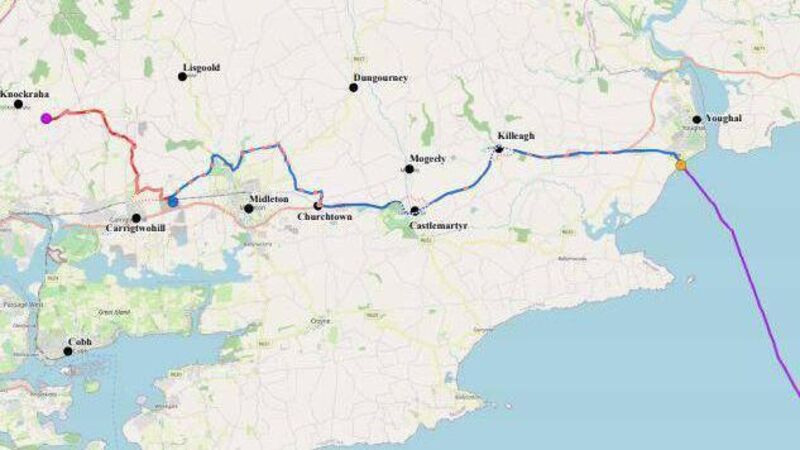Planning sought to land €1bn subsea power cable on East Cork beach

The route chosen for the Celtic interconnector cable. Picture: EirGrid
EirGrid has applied for permission to land a €1bn subsea power cable on the East Cork coast.
The group responsible for the country's electricity supply has applied to the housing, local government, and heritage minister for consent, under the Foreshore Act, to occupy an area of foreshore at Claycastle Beach, in Youghal, to allow it install and operate the Celtic interconnector cable.
The project aims to create an electrical interconnection between Ireland and France to allow the exchange of electricity between the two.
The power cable will run undersea for 575km between the Brittany coast, in northern France, and the Cork coast. A fibre-optic link is also being laid along the subsea route.
The cables will come ashore in Ireland at Claycastle beach, which was mainly chosen as the landfall point because of its offshore approach. Engineers say it has a sediment channel deep enough to bury the cable and protect it against fishing and shipping, without the requirement for rock cutting or rock placement.
The power cable will then largely follow the public road network for about 11km to a new converter station at Ballyadam, in Carrigtwohill, bypassing Castlemartyr and Killeagh, before continuing west to a substation in Knockraha, where it will connect to the Irish electricity transmission system.
The application to the minister now triggers an eight-week period for public submissions to the foreshore unit of his department, and during which the minister will consult with France and the UK.
The closing date for the receipt of written submissions is 5.30pm on December 6.
Copies of the application, of the environmental impact assessment report, and of a raft of other technical documents are available on the department’s website.
The interconnector has been designed to have capacity of 700 MW, equivalent to the power used by 450,000 homes.
It is being jointly developed by EirGrid and its French counterpart, RTÉ (Réseau de Transport d’Électricité), who have been working together on the project since 2011.
If the project is approved, it's due to be completed in 2026.
It's being co-funded by EirGrid and RTÉ, with co-financing from the European Commission, which has awarded €530m to support its design and delivery.





